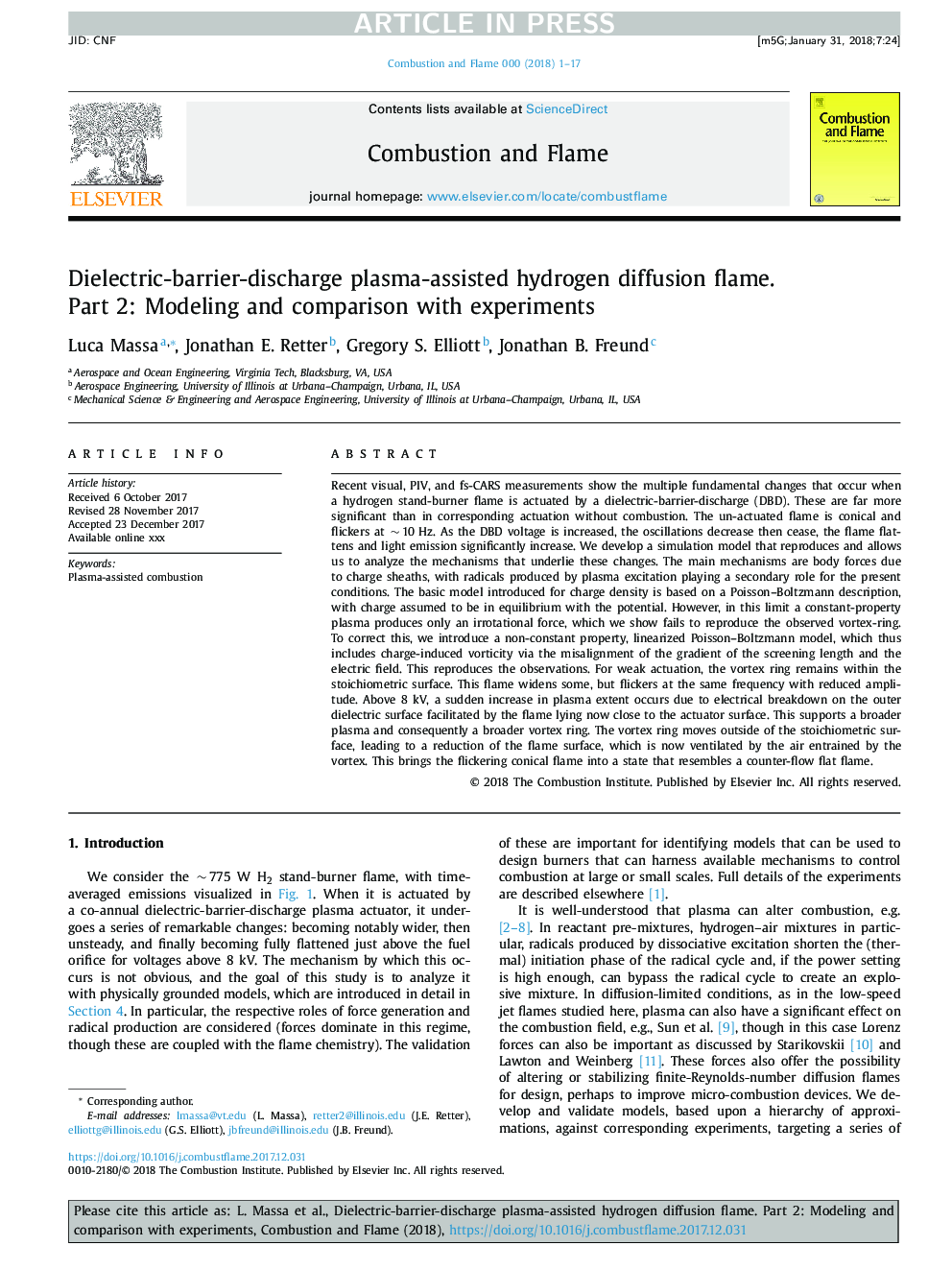| کد مقاله | کد نشریه | سال انتشار | مقاله انگلیسی | نسخه تمام متن |
|---|---|---|---|---|
| 6593790 | 1423546 | 2018 | 17 صفحه PDF | دانلود رایگان |
عنوان انگلیسی مقاله ISI
Dielectric-barrier-discharge plasma-assisted hydrogen diffusion flame. Part 2: Modeling and comparison with experiments
ترجمه فارسی عنوان
شعاع هیدروژن دی اکسیدکربن - تخلیه دی اکسیدکربن. قسمت 2: مدل سازی و مقایسه با آزمایشات
دانلود مقاله + سفارش ترجمه
دانلود مقاله ISI انگلیسی
رایگان برای ایرانیان
کلمات کلیدی
احتراق کمک پلاسما،
موضوعات مرتبط
مهندسی و علوم پایه
مهندسی شیمی
مهندسی شیمی (عمومی)
چکیده انگلیسی
Recent visual, PIV, and fs-CARS measurements show the multiple fundamental changes that occur when a hydrogen stand-burner flame is actuated by a dielectric-barrier-discharge (DBD). These are far more significant than in corresponding actuation without combustion. The un-actuated flame is conical and flickers at â¯â¼â¯10 Hz. As the DBD voltage is increased, the oscillations decrease then cease, the flame flattens and light emission significantly increase. We develop a simulation model that reproduces and allows us to analyze the mechanisms that underlie these changes. The main mechanisms are body forces due to charge sheaths, with radicals produced by plasma excitation playing a secondary role for the present conditions. The basic model introduced for charge density is based on a Poisson-Boltzmann description, with charge assumed to be in equilibrium with the potential. However, in this limit a constant-property plasma produces only an irrotational force, which we show fails to reproduce the observed vortex-ring. To correct this, we introduce a non-constant property, linearized Poisson-Boltzmann model, which thus includes charge-induced vorticity via the misalignment of the gradient of the screening length and the electric field. This reproduces the observations. For weak actuation, the vortex ring remains within the stoichiometric surface. This flame widens some, but flickers at the same frequency with reduced amplitude. Above 8 kV, a sudden increase in plasma extent occurs due to electrical breakdown on the outer dielectric surface facilitated by the flame lying now close to the actuator surface. This supports a broader plasma and consequently a broader vortex ring. The vortex ring moves outside of the stoichiometric surface, leading to a reduction of the flame surface, which is now ventilated by the air entrained by the vortex. This brings the flickering conical flame into a state that resembles a counter-flow flat flame.
ناشر
Database: Elsevier - ScienceDirect (ساینس دایرکت)
Journal: Combustion and Flame - Volume 191, May 2018, Pages 541-557
Journal: Combustion and Flame - Volume 191, May 2018, Pages 541-557
نویسندگان
Luca Massa, Jonathan E. Retter, Gregory S. Elliott, Jonathan B. Freund,
